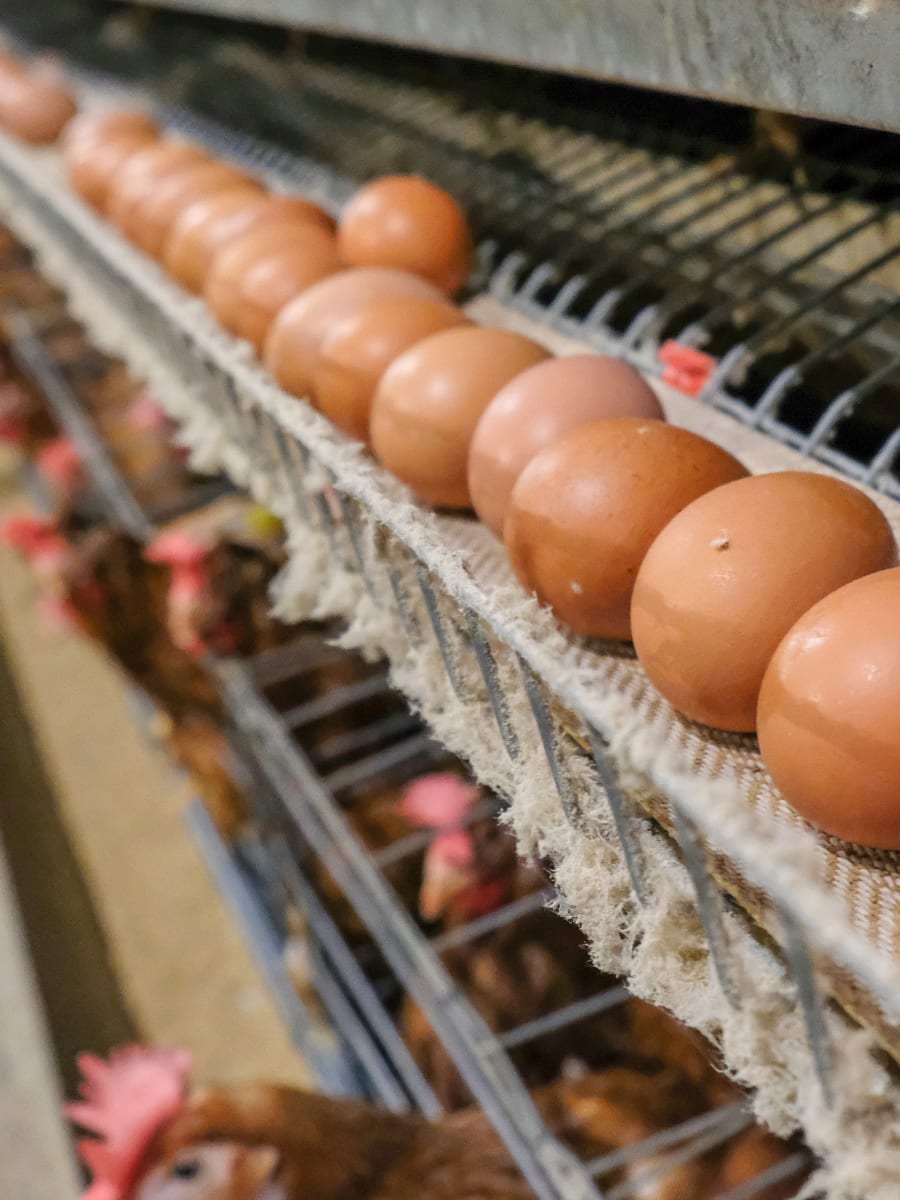Pullet growers, it's time for you get the recognition you deserve. Without you, two of the other main areas of the poultry industry—broilers and breeders—would cease to exist.
We've all heard the age-old riddle, "Which came first: the chicken or the egg?" Well, in the poultry industry, the pullets come first! Our goal is to take care of pullet farmers because you impact us all.
Pullet Challenges

As a grower of pullet chickens, uniformity and mortality are likely your two main challenges. Let's dive into each challenge and how we can help.
Uniformity
I spent some time with the breeder manager of one of the top integrators to really get a grasp on the concept of uniformity for pullets. My biggest takeaway? The feed is geared to the size and age of the young hen, and if those two aspects aren't uniform, then performance, hatchability and production are going to be impacted. Several factors affect uniformity, with the main ones being malabsorption and stress.
Malabsorption
You hear folks say, "Everything the bird needs is in the feed." But is the bird actually absorbing what's in the feed? That's when malabsorption becomes an issue.
There are a number of ways to help with malabsorption, including supplementing feed with electrolytes, vitamins or organic acids. When we say "organic acids," we're referring to things like acetic acid, butyric acid and our favorite—fulvic acid. Our poultry probiotic, Hen Helper, contains fulvic acid to help birds absorb more nutrients at a cellular level.
Stress
Stress affects the gut in so many ways—and since the gut is where nutrient absorption takes place, it's especially important to control stress to help with malabsorption and overall uniformity. You can control stress by checking its sources: excessive noise, extremely hot conditions, extremely cold conditions, a feed outage or poor water quality. These can all cause stress in your juvenile chickens, and therefore, threaten their gut and immune system.
Check out our blog on gut health to learn more.
Mortality

Everyone is concerned with mortality. From broilers to breeders to pullets, mortality is huge for all growers. Especially in this antibiotic-free environment, mortality is as important as ever. And for pullets, it's an even bigger deal than other areas of production. Why is that? The average broiler chick is worth about $0.20 when it hits the ground. When a pullet chick hits the ground, it's worth about $7.00 (35 times the worth of the broiler chick!). Not only that, but if there's a spike in mortality across the board in pullets, you're going to have a lag effect of less breeders, less egg laying and less broilers.
As much as breeder managers push for a good-performing bird that's cranking out eggs, the fact is, at least some laying hens producing some eggs is better than no laying hens producing no eggs. So mortality is huge—not only for the grower but also as it impacts our industry.
Biosecurity
What can you do to help with mortality? Two words: Poultry biosecurity. Poultry biosecurity is so important that it's the name of our blog and YouTube channel. Your poultry houses don't need any help adding more bad bacteria—there's naturally bad bacteria that work their way into them. Biosecurity is basically preventing anything new from coming on the farm. Think cross-contamination. This could be a visitor bringing bad bacteria to your farm from another farm—or even bad bacteria traveling from one house to another house. You want to keep the outside influence to a minimum the best you can.
Poultry biosecurity extends to your poultry house floors. Litter Life is a scientifically designed litter treatment for biosecurity made to keep your floors secure. With strong natural defenses, birds grow in a healthier environment with less threat of disease, lower mortality and better performance for all. You can learn more about poultry house floor biosecurity on our blog. And fun fact about Litter Life: Back in 2009 when it was created, it was first used in a pullet house!
Disinfecting
If not properly disinfected, places like the control room floor can become a breeding ground for bad bacteria, which can easily be tracked into the house and cause disease in the flock.
Sanitizing kills 99% of fungus and bacteria, while disinfecting kills 99.999% of bacteria and viruses. This difference is important to poultry house biosecurity because the bacteria and viruses that survive sanitization can become the culprit of a serious disease outbreak in your house.
As part of your disease control practices, it's important to check product labels to see if they disinfect or only sanitize, and choose cleaning products that do both.
Probiotics and Phytoceuticals

Beyond biosecurity and disinfecting measures, probiotics and phytoceuticals can boost the overall health of your birds at all ages, giving them a strong start from baby chicks to young chickens and beyond.
Probiotics, like Hen Helper, strengthen your baby chickens’ natural defense system from within, adding good bacteria, building the immune system and getting rid of bad bacteria that cause mortality. The special ingredients, humic and fulvic acids, improve shell quality and egg production by keeping hens in peak longer. With Hen Helper, you can expect cleaner eggs and firmer shells. Hen Helper can be used when hens begin laying and throughout their lives, giving them an extra boost of health to well-equip them for laying.
Phytoceuticals are natural, plant-based components that also help deal with bad bacteria. Raw apple cider vinegar is another way to boost your young chicks' overall health, aid in digestion, keep the GI tract healthy, tighten the gut and provide bacteria that support poultry development.
Contact Us
If you have any questions or ideas for future videos, reach out to me at allen@southlandorganics.com. To stay up to date on our content made just for poultry growers, subscribe to our Poultry Biosecurity YouTube channel.





